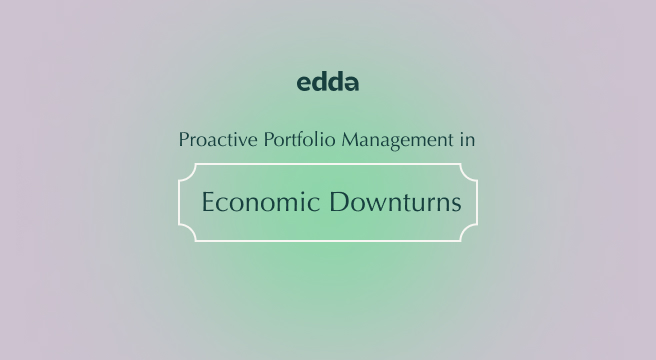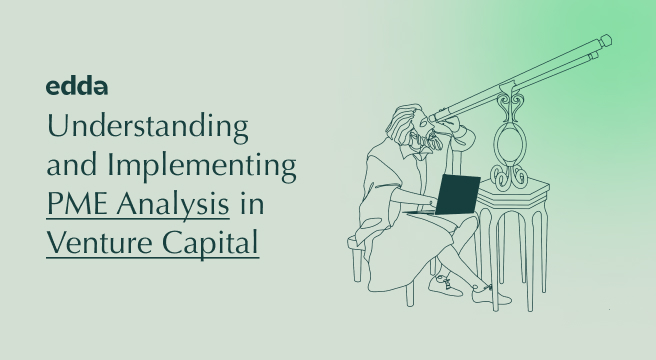The ability to analyze, interpret, and leverage vast amounts of data is paramount in venture capital. The effective use of data analytics can mean the difference between successful venture portfolio management and missed opportunities. This is particularly true when it comes to portfolio analytics—a powerful tool that allows VCs to glean valuable insights from their investments, leading to informed decisions, improved portfolio performance, and maximized returns.
The Imperative of Portfolio Analytics in Venture Capital
Venture capital portfolios are intricate ecosystems, made up of diverse investments, each presenting unique characteristics, potential rewards, and associated risks. Navigating this complexity requires a sophisticated and nuanced understanding of the portfolio, something that portfolio analytics is specifically designed to facilitate.
Portfolio analytics tools offer an in-depth view into the performance of individual portfolio companies and the portfolio as a whole. By keeping a finger on the pulse of key performance indicators (KPIs)—including growth rates, revenue, profitability, and market share—venture capitalists can monitor trends, identify potential challenges early, and seize emerging opportunities.
More than just a passive reporting tool, portfolio analytics is an active decision-making aid. It helps VCs understand what is driving a portfolio company’s performance, assess the impact of internal and external factors, and project future performance under varying conditions. All these insights equip venture capitalists to make proactive, data-backed decisions, whether it’s injecting more capital into a high-performing company, re-evaluating the strategy of an underperformer, or identifying the right time to plan an exit.
Integral Features of Advanced Portfolio Analytics Tools
In order to deliver meaningful insights, portfolio analytics tools must feature several key capabilities:
Performance Tracking: At the heart of portfolio analytics is the ability to track the performance of individual companies and the overall portfolio over time. This goes beyond just capturing historical data—it includes tracking progress against strategic goals and industry benchmarks, monitoring the efficacy of interventions, and comparing actual outcomes against forecasts.
Data Visualization: Given the complexity and volume of data involved in venture capital portfolio management, data visualization is an indispensable feature. By presenting data in a visual, interactive format, these tools make it easier for VCs to comprehend complex data sets, identify trends and patterns, and share insights with stakeholders.
Scenario Analysis: As VCs must constantly navigate uncertainty, the ability to model different scenarios is invaluable. This could involve simulating the impact of market changes, shifts in strategy, or variations in investment levels on a portfolio company’s performance. The insights derived can help VCs plan for different potential futures and devise robust strategies.
Benchmarking: One of the most effective ways to gauge a portfolio company’s performance is by comparing it against relevant industry benchmarks or comparable firms. This allows VCs to understand where their investments stand in the larger industry context and identify areas of strength and improvement.
Risk Assessment: The ability to identify, quantify, and monitor risk is critical in venture capital. Advanced analytics tools can help detect potential risks and vulnerabilities within a portfolio, enabling VCs to take preemptive actions to mitigate them.
The Future of Portfolio Analytics in Venture Capital
The role of data analytics in venture capital is destined to evolve and expand. Portfolio analytics, in particular, stands at the cusp of a major transformation, driven by advancements in technology and shifts in the VC landscape. Here are some emerging trends and predictions on the future of portfolio analytics in venture capital:
AI and Machine Learning
Artificial intelligence (AI) and machine learning (ML) are set to redefine the capabilities of portfolio analytics tools. By automating complex analytical tasks, AI can accelerate data processing and insight generation, allowing VCs to make quicker, informed decisions. ML algorithms can uncover hidden patterns in data and provide predictive insights, equipping VCs to anticipate future performance, risks, and opportunities with greater accuracy.
Enhanced Integration
The future will witness a further convergence of different data sources into portfolio analytics platforms. With advancements in integration technologies, VCs will be able to pull in data from an increasingly diverse array of sources—ranging from traditional financial reports to alternative data like social media sentiments or news trends. This will enable a more holistic view of portfolio companies and the broader market, leading to richer insights.
Real-time Analytics
With the proliferation of real-time data sources and the demand for swift decision-making, real-time portfolio analytics will become the norm. VCs will be able to monitor portfolio performance, market trends, and risks on a real-time basis, enabling immediate action when necessary.
Personalized Analytics
As portfolio analytics tools become more sophisticated, they will offer greater personalization options. VCs will be able to customize their dashboards, alerts, and reports based on their unique needs and preferences. This personalized approach will make portfolio analytics more user-friendly and effective.
Sustainability Metrics
As sustainability and social impact become more central to business and investment strategies, portfolio analytics tools will incorporate more sustainability metrics. This will allow VCs to assess the environmental, social, and governance (ESG) aspects of their portfolio companies, an increasingly important factor in investment decisions.
Edda: Empowering Venture Capitalists with Sophisticated Portfolio Analytics
Edda, a leading player in the fintech space, offers a comprehensive suite of portfolio management software tools tailored to meet the unique needs and challenges of venture capitalists.
Edda’s venture capital portfolio management software delivers real-time performance tracking, allowing VCs to monitor their portfolio’s performance continuously and accurately. This is complemented by robust data visualization capabilities, which transform complex data into intuitive, easily digestible visual representations.
Beyond tracking and visualization, Edda’s portfolio management software also boasts advanced scenario analysis capabilities, enabling VCs to model a wide range of scenarios and assess their potential impact on portfolio performance.
Furthermore, Edda’s venture capital software facilitates comprehensive benchmarking against industry peers, giving VCs a clear understanding of their portfolio’s competitive positioning. It also integrates sophisticated risk assessment algorithms that provide early warnings about potential risks and issues, empowering VCs to take proactive measures.
Another key strength of Edda’s VC portfolio management tools is its seamless integration with other business intelligence tools. This allows VCs to pull in data from multiple sources, facilitating a holistic and integrated analysis of portfolio performance.
The platform is designed with user experience at its core, offering an intuitive interface that simplifies the complex process of portfolio analytics. With Edda (formerly Kushim), venture capitalists not only have a powerful analytics tool at their disposal but also a reliable partner to guide them through the intricacies of venture capital portfolio management.
By harnessing the power of Edda’s comprehensive portfolio analytics platform, venture capitalists can effectively navigate the dynamic startup landscape, make data-driven investment decisions, and ultimately, build a successful venture capital portfolio. In doing so, they unlock the true potential of their data, transforming it from raw numbers into a strategic asset that drives their venture capital practice forward.









